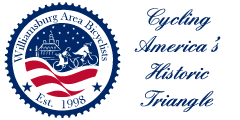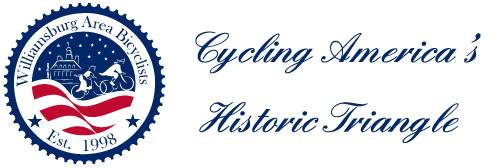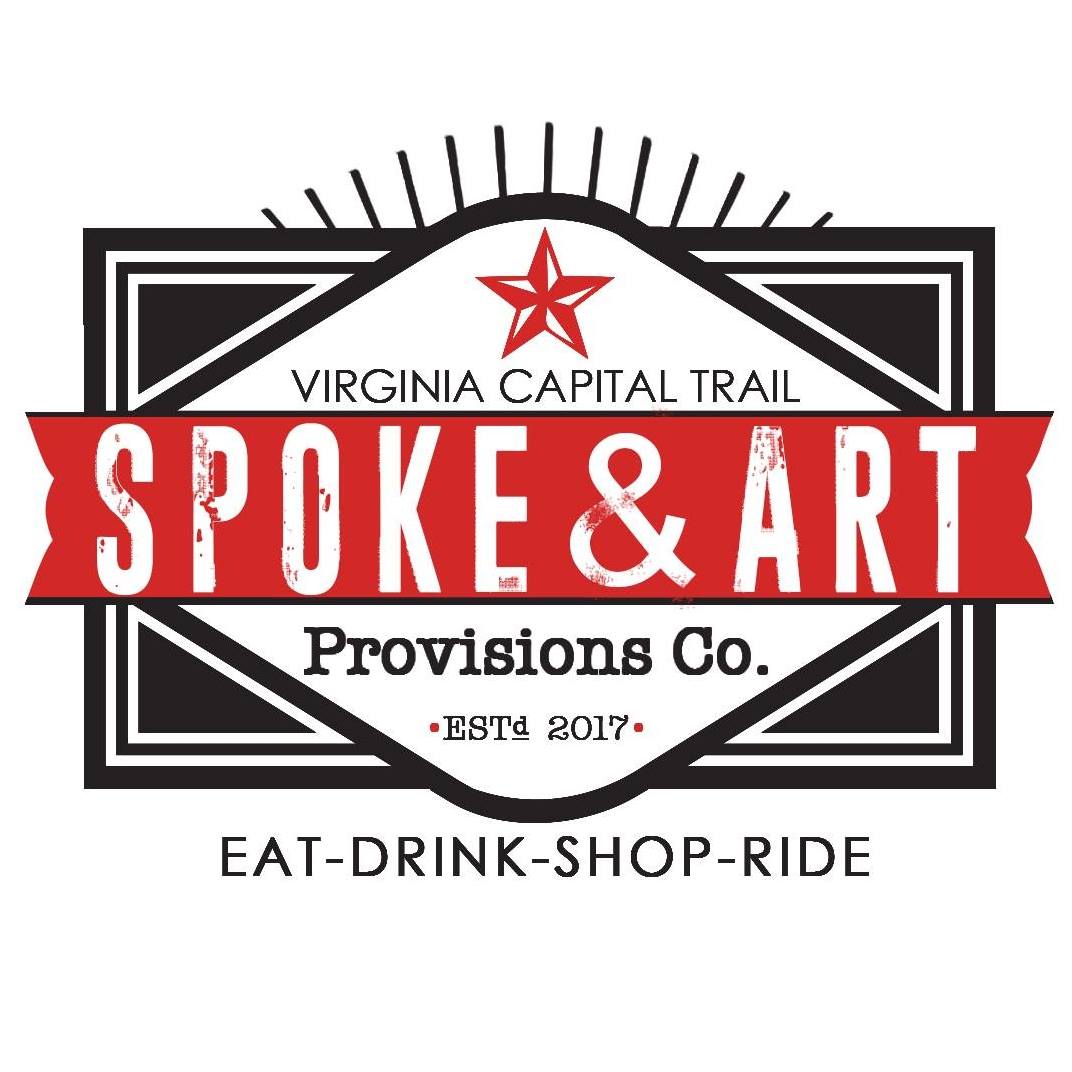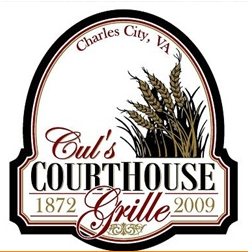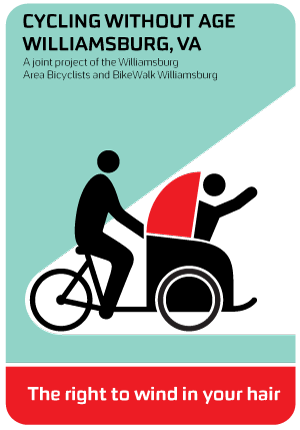
The following “Group Riding Practices” document was compiled to help members new to group riding. However, it is also beneficial for veteran group riders to review and serve as a refresher. If you have any suggestions or additions to this list please add your comments below.
We follow these commonly accepted practices on WAB club rides.
Pre-Ride Brief
The Ride Leader brief sets expectations for the group, including most importantly safety considerations. All riders should arrive early enough to hear the brief, and give full attention to that briefing as it impacts all the riders.
Pace-lining
As the paces increase, there is more benefit to drafting, and thus pace-lining is more prevalent. The lower pace groups (C and D) tend to be less structured as it relates to pace-lining and drafting. Either way, drafting in a pace-line reduces the effort required to maintain a speed over a distance as compared to riding alone.
The Ride Leader will often set the tone - either by example or through verbal pre-ride comments.
Rotating off the Front
The usual rotation sequence is to rotate off the left and drift to the back. The length of time or distance one is expected to “pull” on the front is not strict. Often the Ride Leader will establish some rough guidelines as to the distance or time to pull, but it is always fine to pull less than suggested, or even to simply rotate back and not pull at all.
When you decide to rotate back, select your time to rotate carefully - wait until there are no cars coming either from the back or front and you are on a straight-away.
Signal your intention to rotate off. While WAB has not adopted a specific hand signal for this, it is common to fist bump on the right hip. You can always call out your intentions, such as “I’m pulling out” or “I’m rotating back” after you clear yourself.
When you rotate off, don’t slow down THEN rotate off. Instead, keep your speed constant and drift out to the left, then ease off to the back.
Starting out from a Stop
If you are leading when the group is starting from a stop, or after a sharp turn, soft pedal until you determine that everyone has joined the back of the pace-line. Riders near the back should call out “All On” when everyone has joined.
If you are the first one to lead when the ride starts or after a rest stop, take the first 5-10 minutes at a slower speed to enable warm-up.
Calling out Hazards
Call out and/or point-to hazards such as debris, gravel and potholes. Pass the warning back to those behind you. Riders in the back can rarely hear what riders are saying due to wind and road noise. Relaying the message ensures everyone knows about hazards or road conditions ahead.
Car-back Warnings
If you are near the back of the group, try to keep aware of cars approaching from the back and call out “Car Back”. If the car starts to pass, call out “Passing”. Other riders should pass along these warnings up the line so the front riders know about the traffic approaching.
Pulling Downhill
On a steep downhill, use your best judgment to ensure everyone’s safety. If you are pulling on a more gradual downhill, there is a temptation to coast, but in that case everyone behind you will have to brake, so keep pedaling if you can safely do so. If you are not pulling, give more space between yourself and the person in front of you.
Going Uphill
As a group approaches a climb, there will be a big change in speed, and often shifting of gears. This transition requires anticipation and awareness of the environment. Try anticipating the speed changes. Riders near the front should be mindful of those behind them by staying to the right and making smooth changes in speed. Other riders should anticipate the speed change, shift into an appropriate gear early, and make smooth transitions into the climb, including when standing up to pedal, to avoid impacting the riders behind you.
Pedal Consistently
Try to maintain a fairly consistent pedal stroke. This often means just soft-pedaling rather than coasting. If you pedal/coast/pedal/coast constantly then those behind you have to adjust, causing a spring coil effect that undermines the benefits of the group ride. This is particularly true in a pace-line where the benefit of the draft requires riding fairly close to the rider in front of you. This can be both annoying and un-safe.
Ride Predictably
Avoid sudden movements, instead being smooth and maintaining a steady line. Try to look out ahead and spot upcoming road hazards far enough in advance that you can adjust your line gradually.
Announce Your Intentions
If you are coming up alongside another rider, announce “On Your Left” or “On Your Right” with enough time to avoid surprising them. If the group in front is slowing or stopping, announce accordingly. If a turn is approaching, use a hand signal, or announce “Right Turn” or “Left Turn”, or both.
Don’t Overlap Wheels
Avoid overlapping your front wheel with the rear wheel of the rider in front of you. If that person makes a sudden movement and clips your wheel, you WILL go down.
Don’t Ride Too Close
While drafting requires riding fairly close to the rider in front of you, don’t ride too close. Riding too close may make the cyclist in front of you uncomfortable and will often require you to pedal/coast, which may irritate the cyclist behind you,
Don’t Blind the Cyclist in Front of You
Many cyclists wear mirrors that allow them to look behind them (for traffic, to ensure the group is “all on,” etc.). A mirror is most important when a group is approaching a left turn on a multi-lane road, and the lead rider needs to see if traffic is approaching from the rear. If practical, do not draft the lead cyclist by riding slightly to their left. If you can see yourself in their mirror, you may be blinding them.
Ride Single File
Most of the time, ride single file to the right unless on a quiet road or trail with clear visibility of traffic. Definitely single-up when approaching a curve. If you’re the left-most rider, assume responsibility for moving toward single file, meaning pulling ahead or falling back into the line. This is most important while riding on the trail.
Staying Together
In the ideal scenario, the entire group stays together for the ride. However, this doesn’t always happen. Often one or more riders may “fall off the back” either due to a hill or because the pace is too high for them. In the former case (hill), it is generally accepted that everyone will go up the hill at their own pace, and then re-group at the top. Guidance in these situations usually comes from the Ride Leader. In the latter case (pace too high) this is also a judgment the Ride Leader will probably make. If the pace is tending to be above the advertised pace of the ride, then the leader may ask the person pulling to take it down a notch. If you are pulling, you should try to maintain an awareness of the others and defer to the Ride Leader for guidance. In some cases, the leader may designate re-group points depending upon the route. In any case, generally participants are not dropped without making some accommodation, as we do not want anyone riding alone, as it undermines the purpose of the group ride. In some cases, with Ride Leader awareness, a rider can “fall back” and rejoin with another group on the same route. However, not all rides have this option available, so communicating with the Ride Leader is essential.
Crossing Intersections
When arriving at an intersection take care to assess the safety of crossing. If in any doubt, stop completely. If there are cars approaching from either direction, call out “Car Left” or “Car Right”. When you have determined it is safe to cross, you may call out “Rolling”, but avoid calling out “Clear”, since it is the responsibility of every rider to make their own determination when it is safe for them to cross.
Left Turns
When making a left turn, first determine if any cars are coming up from behind. It will be a judgment call based upon the situation to determine when you can safely move to the left to prepare for the left-hand turn. It is often helpful for someone near the back of the group to “Take the Lane” and signal to cars behind that the group is preparing to turn left since it may be easier to assess the traffic situation from the back.
Riding on the Trail
Since so many of our rides traverse a trail such as the Virginia Capital Trail, it it worth reinforcing some special trail considerations. When other riders are approaching the group from the front, call out “Rider Up” so everyone knows to stay single file. When coming up upon slower cyclists or pedestrians, use caution to pass them on the left. Call out “On Your Left” and ascertain that they heard you prior to passing. They may be wearing headphones obstructing their hearing. As mentioned above, you should normally ride single file on the trail but especially single up when encountering others or on curves where visibility is limited. Finally, call out the posts that exist on bridges and at intersections.
SAFETY AND COURTESY IN GROUP BICYCLE RIDES
This document was compiled by WAB member Kevin Drawbaugh - thanks Kevin!
Before the ride …
- Designate a ride leader. Count riders and recount periodically enroute.
- Encourage hand signals and verbal callouts of hazards.
- Agree on route, approximate pace, rest stops, drops or no-drops.
- Agree on pace line approach.
- Share info on potential road conditions and hazards ahead.
- Switch on safety lights and bike computer. Roll out smiling!
Group ride communications …
- Hand signals:
- Right turn = Right arm outstretched. Any turn should be signaled by the front rider and others 15 seconds before the turn and again just before it.
- Left turn = Left arm outstretched.
- Hazard on road (pothole, bump, glass, branches, roadkill, other debris) = Arm outstretched, index finger pointed down at hazard.
- Gravel = Arm outstretched, all fingers spread out and wiggling.
- Slowing = Right arm outstretched, palm facing back and down in a patting or dribbling motion.
- Move left (to avoid pedestrian, cyclist or obstacle ahead = Right arm wrapped around lower back, index finger pointing left.
- Rolling off pace line lead = Right fist taps thigh or right elbow flicks out.
- Need space to join pace line = Right arm extended and finger pointed into pace line by someone not in the line seeking to get in it.
- Mechanical trouble or flat tire, go around me = Raised hand.
- Verbal callouts (spoken loudly so group can hear):
- Car up = vehicle approaching ahead.
- Car back = vehicle approaching from behind.
- Car passing = prepare for vehicle to pass us.
- Car left, car right = vehicle ahead on left or right.
- Slowing = I’m slowing down, for whatever reason.
- Stopping = I’m stopping.
- Left or right turn = Be ready for me to turn.
- Gravel = Beware of gravel on road surface ahead.
- Rolling = I’m proceeding because it looks safe to me. This is better than “clear.” Each rider must decide for themselves if it is safe to proceed.
- Take the lane = Move carefully into the center of the traffic lane, with the group, usually ahead of an intersection or a turn.
- Hole = Beware of pothole or similar road surface hazard ahead.
- Dog = Beware of man’s best friend, unleashed and chasing the group. The loud ones usually are harmless; the grim, quiet ones often mean business.
- Flat = Tire is flat and I need to stop for repair.
- Walker or runner up = A pedestrian or jogger is ahead, moving in either direction. Prepare to go around if the group is overtaking.
- Rider up = Another cyclist is ahead, moving in either direction. Prepare to go around if it is a slower cyclist being overtaken.
- Passing on your left = Spoken when overtaking and passing anyone.
Group rides generally …
Communicating by hand and verbally is a major job for the rider in the front of the group. Others should join in, but it’s not necessary for everyone to always signal or call out a hazard. It’s also not necessary to call out or signal every small crack in the pavement, or a problematic condition that continues for a long time. Just make sure enough people call attention frequently enough to important hazards so that everyone knows about them.
Hand signals are good, if they are widely recognized, but any hazard that may cause a crash should be loudly called out by the first person to recognize it.
Follow bike traffic laws. Ride on the right side of the road, but don’t hug the curb or the pavement edge because that reduces your visibility to motorists. They are supposed to give you three feet of clearance. Make that possible for them whenever possible.
When vehicles are present, ride single file and stop at intersections. When riding on a street where you are keeping up with traffic or where traffic is stopped, “take the lane,” especially before a turn. This means riding in the center of the lane where you will be clearly seen by motorists and can signal your intentions to them.
Avoid angering motorists. Some of them already dislike us, for reasons we don’t really understand. So, don’t flip them off or provoke them. If a motorist appears to stop to let you pass, make eye contact and be sure of their intentions. If all is well, give a friendly wave.
Pass bikes, pedestrians and motor vehicles on the left. Before you do, say loudly but politely, “passing on your left.” Don’t pass on the right if you can avoid it.
Don’t wave at cars to indicate they may pass. That’s their decision, not yours. Hand signal lane changes or turns to vehicles several times before making your move.
Always yield to and avoid alarming pedestrians, children and animals. If a dog chases you, pedal hard and bark back. If Fido is too fast, stop, put the bike between you and the dog.
If your group is not riding in an organized way, it may be in a loose jumble known as a peloton. Try to stay in the front ranks of a peloton; it’s safer. If you must stop, move your bike and yourself completely off the road. Leaving a ride. If you plan to quit, tell the ride leader.
Pace line safety …
The big plus to group riding is pace line drafting, where one rider leads the pack by pedaling into the wind. This allows others to sit in line behind the leader’s wake. This practice can reduce drag by 50 percent, letting everyone ride faster and farther with less work. To share the extra effort required of being in the front, riders take turns being the leader.
The big minus to the pace line is reduced visibility. It’s hard to see approaching obstacles when you’re tucked in behind the rider ahead. For this reason, safe group rides require constant communication and a basic understanding of pace-line etiquette and bike-handling skills. Everyone needs to understand these issues and participate.
Riding at the front of the paceline is called pulling. Typically, you pull for a few minutes. When you’re done, signal that you’re rolling off. Tap your right leg with your fist or flick your elbow. Then, after checking for traffic on your left, steer off the front to the left. The rider behind you will move up and take over the pull. After this happens, you drift smoothly to the back of the pace line and reenter the draft behind the last rider in the group.
Pace line pro tips for everyone …
- Hold your line. Don’t swerve unexpectedly. Keep your gaze ahead of you and your handlebars steady. Even when talking with another rider, avoid turning your head.
- Get a rear-view mirror and use it. If you must look back, do it with only your head.
- Maintain a steady pace. Avoid sudden accelerations and decelerations.
- Don’t slam on your brakes if you can avoid it.
- Avoid half-wheeling. When riding next to someone, try to keep your handlebars in line. When riding behind someone, avoid overlapping wheels with them.
- Keep a safe distance. Don’t ride any closer to someone’s back wheel than you feel is safe. Assess the skills and experience of the rider ahead and adjust spacing as needed.
- Monitor wind conditions. In a crosswind, you can save energy by drafting in an “echelon” slightly to the left or right of the rider ahead, but avoid overlapping wheels.
- Always stay attentive, with your hands near your brakes.
- Try to keep pedaling. The buzz of a coasting freewheel hub suggests to trailing riders that a rider ahead is slowing and they should, too. This worsens the “accordion effect,” causing the pace line to slow and speed up intermittently for no good reason.
- Don’t use aerobars when riding in tight formation. They greatly reduce steering control.
- Don’t snot-rocket or spit on your friends. If you must expectorate, look before launch.
- Some riding groups naturally divide into fast and not-so-fast. That’s okay, if everyone knows this may occur. If it does, hang with the hitters as long as you can, but don’t be embarrassed about fading back if you need a breather. Also, group ride best practices are not set aside during KOM sprints.
Pace line pro tips for the puller …
Riding in front is harder than sitting back in the pack, especially at high speed or into a headwind. Rotating into the puller spot can be a rude surprise on a blowy day. Brace yourself.
However, don’t overdo it by surging into the pull with a sudden jump in pace, which may annoy others. Keep the pace smooth through the transition from one puller to the next.
Once you’ve settled into the front, keep things steady and avoid unexpected changes in pace. Resist the temptation to surge up ascents. Let the speed drop a bit while going uphill.
How long you stay at the front depends on group dynamics and your ability. Generally, the faster the group, the shorter the pulls, but monitor how you feel. You need to save enough energy to catch back onto the paceline after rotating off, as well as to pull again later. Every group ride has its own standards, but there’s no shame in pulling for a shorter time than others.
While at the front, you are responsible for picking a safe path for the group around obstacles and through traffic. Keep your eyes on the road. Clearly hand signal and call out upcoming hazards or pace changes. At traffic lights, determine if a full stop is needed, based on whether everyone will be able to get through a green light before it changes to red.
When you peel off the front and fade back to the tail, it can take a lot of work to get back into the draft and cruising, especially if you drift back too quickly or if the next puller cranks up the pace. This little effort can easily put you over the limit if you’ve just taken a hard pull. It’s one of the most common moments for riders to get dropped. When you’re pulling, save something in your legs for the effort of catching back on.
Pace line cornering and descents …
Riding in a paceline on straight, level terrain is comparatively easy. Turns and hills can be a challenge, especially for less-experienced riders.
In corners, follow the line and speed of the riders in front of you. Pay attention to hand signals and verbal callouts for slowing or gravel. If you must brake for a turn, do it before you get there. Then you can smoothly enter the turn and carve a safe arc through it.
Riders farther back in the pack must brake harder before the turn than the first riders to enter it, due to the accordion effect. So, shift into an easier gear before entering the turn. That way you’ll be able to accelerate and get back up to speed more quickly afterward.
When the group encounters a descent, riders farther back will accelerate more quickly than those ahead due to the draft advantage. Everyone should play it safe on downhills when speeds rise. Don’t draft tightly. Open space around you on all sides. Don’t worry about keeping up. As the group reaches the bottom, the paceline will naturally come back together.
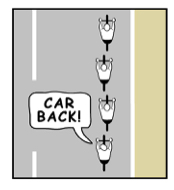 Sometimes good intentions cause bad things to happen. In this perfect paceline (evenly spaced, slightly staggered left-right-left), the last rider hears a car behind and believes it’s necessary to warn the others. So far, so good. But the well-intentioned warning could create disorder at the worst possible moment if not all riders know how to ride a paceline correctly.
Sometimes good intentions cause bad things to happen. In this perfect paceline (evenly spaced, slightly staggered left-right-left), the last rider hears a car behind and believes it’s necessary to warn the others. So far, so good. But the well-intentioned warning could create disorder at the worst possible moment if not all riders know how to ride a paceline correctly. 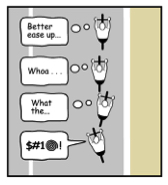 Hearing “car back!,” one of the riders reduces pedal pressure—a completely unneccesary and thoughtless move (often made worse by the shout “slowing!”) The rider behind taps the brakes, and the accordion effect forces the next rider to brake hard. The last rider now has the interesting choice of either locking up the brakes or swerving around the chaos in front.
Hearing “car back!,” one of the riders reduces pedal pressure—a completely unneccesary and thoughtless move (often made worse by the shout “slowing!”) The rider behind taps the brakes, and the accordion effect forces the next rider to brake hard. The last rider now has the interesting choice of either locking up the brakes or swerving around the chaos in front. 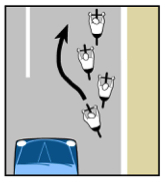 The last rider decides to swerve around the bunch. Unfortunately, the car he warned the others about is approaching fast. Now the well-being of all riders depends completely on the skill of the driver. It’s a worst-case scenario, but it could happen. Lesson: don’t reduce pedal pressure when you hear “car back.” Or “car up,” for that matter. Just keep riding!
The last rider decides to swerve around the bunch. Unfortunately, the car he warned the others about is approaching fast. Now the well-being of all riders depends completely on the skill of the driver. It’s a worst-case scenario, but it could happen. Lesson: don’t reduce pedal pressure when you hear “car back.” Or “car up,” for that matter. Just keep riding! 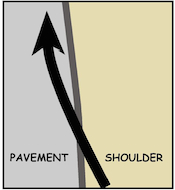 When you run off the pavement on Jolly Pond Road, your gut reaction is to get back onto it as quickly as possible. Usually, that’s a bad move. This panel depicts your intended path of your front wheel when you panic and don’t think clearly. The problem is you’re trying to cross the pavement edge at a very shallow angle.
When you run off the pavement on Jolly Pond Road, your gut reaction is to get back onto it as quickly as possible. Usually, that’s a bad move. This panel depicts your intended path of your front wheel when you panic and don’t think clearly. The problem is you’re trying to cross the pavement edge at a very shallow angle. 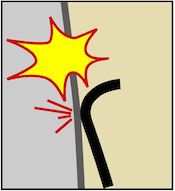 Because of the shallow approach angle, your front tire can’t climb and roll over the pavement edge. Instead, your tire sidewall will scrub hard against the pavement edge, forcing your front wheel into a sharp right turn. That pitches your body down and to the left— usually into the middle of the travel lane. The next panel shows you how to avoid this common crash.
Because of the shallow approach angle, your front tire can’t climb and roll over the pavement edge. Instead, your tire sidewall will scrub hard against the pavement edge, forcing your front wheel into a sharp right turn. That pitches your body down and to the left— usually into the middle of the travel lane. The next panel shows you how to avoid this common crash. 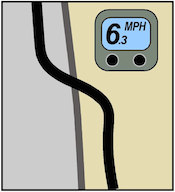 To get back onto the pavement, continue to roll along on the shoulder until you’ve slowed to a comfortable speed. Then make your front wheel cross the edge of the pavement as close to a 90- degree angle as you can. The urge to get back on the pavement quickly is powerful, so this save is counterintuitive and should be practiced regularly.
To get back onto the pavement, continue to roll along on the shoulder until you’ve slowed to a comfortable speed. Then make your front wheel cross the edge of the pavement as close to a 90- degree angle as you can. The urge to get back on the pavement quickly is powerful, so this save is counterintuitive and should be practiced regularly. 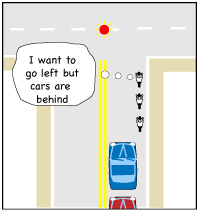 When approaching an intersection where you intend to make a left turn, you might be reluctant to move out into the lane to “take the road”, especially if you see a string of cars coming up from behind.
When approaching an intersection where you intend to make a left turn, you might be reluctant to move out into the lane to “take the road”, especially if you see a string of cars coming up from behind.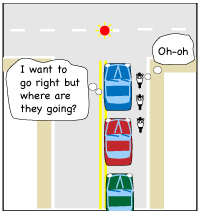 When this happens you can find yourself somewhat “boxed in”. The motorists may not know what your intentions are because you are not positioned to turn left. A motorist who wants to turn right may cross in front of you - not good!
When this happens you can find yourself somewhat “boxed in”. The motorists may not know what your intentions are because you are not positioned to turn left. A motorist who wants to turn right may cross in front of you - not good!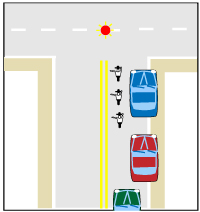 To avoid getting in this situation, slow down well ahead of the intersection and watch for your opportunity when there is a break in the traffic to move over to the left-center of the lane. Signal your intentions to turn left by extending your left arm. Cars turning right can now safely move around you to the right. It is also helpful to have an experienced rider in the back of the group who can more over and signal the left turn intention.
To avoid getting in this situation, slow down well ahead of the intersection and watch for your opportunity when there is a break in the traffic to move over to the left-center of the lane. Signal your intentions to turn left by extending your left arm. Cars turning right can now safely move around you to the right. It is also helpful to have an experienced rider in the back of the group who can more over and signal the left turn intention.